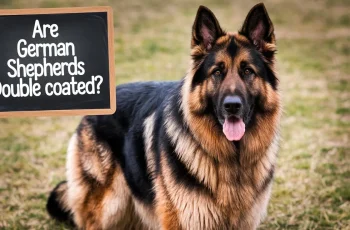White German Shepherds, a captivating color variant of the standard German Shepherd, inherit the breed’s characteristic build, keen intelligence, and unwavering loyalty. Their distinctive white coat arises from a recessive gene, necessitating its presence in both parents. This genetic trait is purely cosmetic, exerting no influence on the dog’s overall health or inherent abilities.

While the United Kennel Club (UKC) fully recognizes white German Shepherds, the American Kennel Club (AKC) does not include the white coat within its breed standard for show purposes. In terms of health, white German Shepherds are generally as robust as their more commonly colored counterparts. However, like all German Shepherds, they can be predisposed to certain breed-specific health concerns such as hip and elbow dysplasia and degenerative myelopathy. Responsible breeders who prioritize genetic testing and careful selection can significantly mitigate these risks.
Finding a white German Shepherd puppy may present a greater challenge due to their relative rarity and the AKC’s stance, which may deter some breeders. It is crucial to seek out ethical breeders who place a strong emphasis on the health, temperament, and overall well-being of their dogs, rather than solely focusing on the desirable white coat. As companion animals, white German Shepherds exhibit the typical German Shepherd traits: they are active and energetic, possess high intelligence, and form deep, loyal bonds with their families. They require ample physical exercise and consistent mental stimulation to thrive, excelling in various roles, from devoted family pets to capable guard dogs. Their inherent eagerness to learn and please makes them highly trainable, responding well to consistent and engaging training methods. Grooming white German Shepherds involves regular brushing of their double coat, particularly during seasonal shedding periods. While their white fur may show dirt more readily than darker coats, routine brushing, along with occasional bathing, nail trims, and ear cleaning, is generally sufficient to maintain their cleanliness and coat health.
When compared to other color variations of the German Shepherd, such as the classic black and tan, sable, or blue, white German Shepherds differ solely in their coat color. They retain all the other iconic physical and temperamental traits that define the breed. Their striking white appearance offers a unique and elegant twist on a beloved classic. In conclusion, white German Shepherds are a relatively rare and undeniably beautiful expression of the German Shepherd breed, possessing the same capabilities and inherent qualities as their more commonly colored relatives. Prospective owners should conduct thorough research into the breed’s specific needs regarding energy levels, training requirements, and grooming demands before considering adoption. For those prepared to meet these needs, a white German Shepherd can be a stunning and devoted companion. Their rarity can sometimes translate to a higher purchase price, and it is particularly important for potential owners to exercise caution and avoid breeders who prioritize coat color over the health and temperament of their breeding stock. Early socialization is paramount for all German Shepherds, including the white variety, to ensure they develop into well-adjusted, confident, and friendly adult dogs. Their intelligence and athleticism make them well-suited for a variety of dog sports and activities, further underscoring that their coat color is merely a superficial difference. The strong and affectionate bonds they form with their families make them exceptional companions who thrive on close interaction and inclusion in daily life.

A comprehensive understanding of the breed’s fundamental characteristics, irrespective of coat color, is essential to providing the appropriate environment, training, and care necessary for a happy and healthy life.



